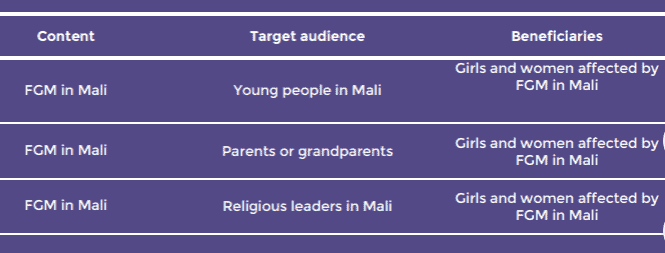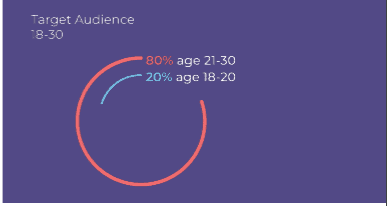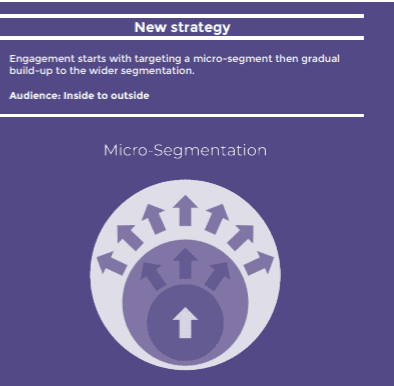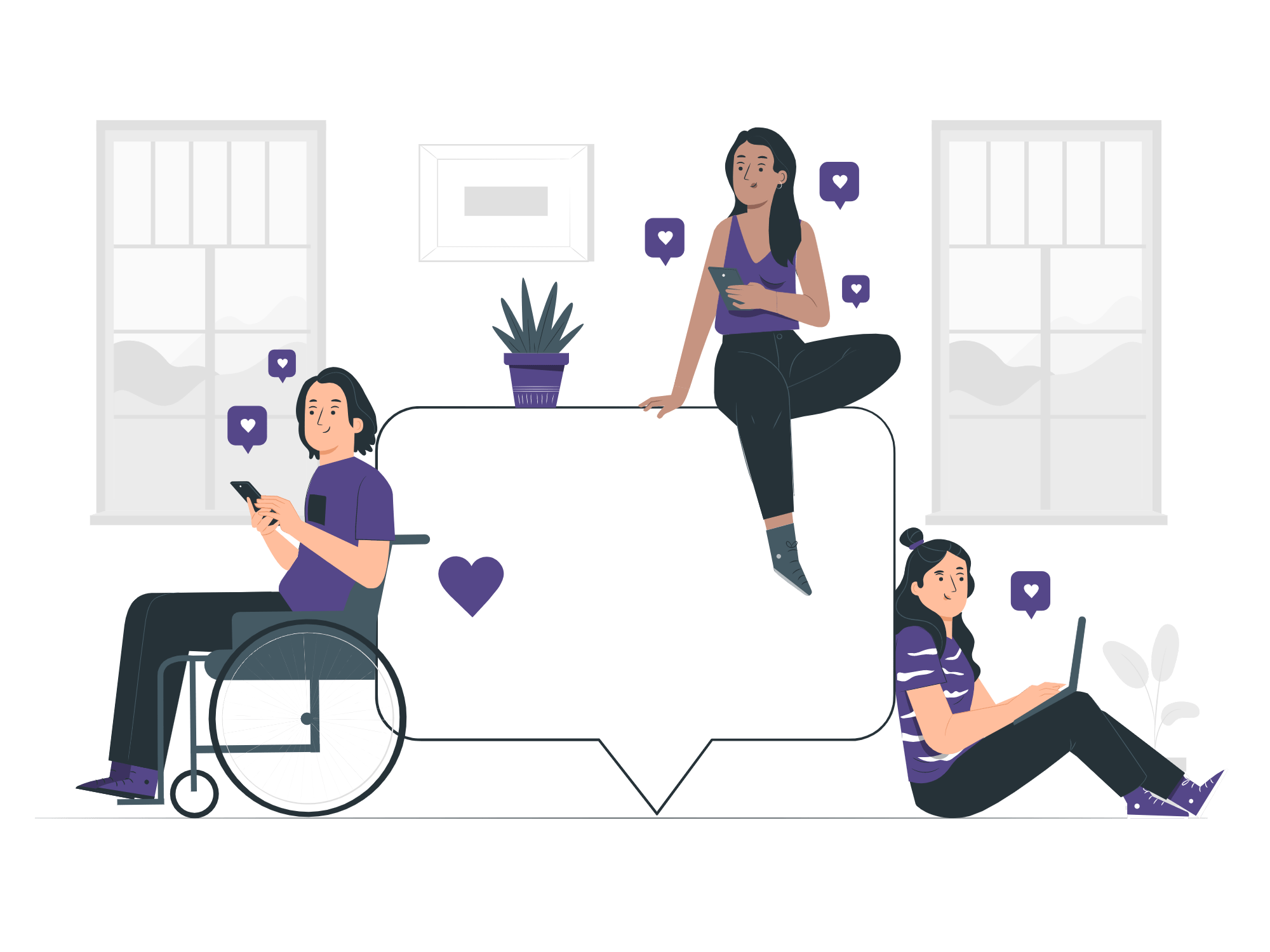On- and Offline Engagement
In the previous units, we have been looking at community moderation to increase online engagement on your platforms. Obviously, there are other ways to scale up your engagement. This can be done both on- as well as offline. In this unit, we will go through other engagement strategies, such as SMART targeting and different offline engagement strategies. RNW Media’s overarching engagement approach positions users in the driving seat, giving them a highly active role in developing and deciding the direction of each discussion.
SMART Targeting
The definition of SMART (Specific, Measurable, Achievable, Relevant, Time-bound) Targeting in the tech industry is the use of artificial intelligence (AI) technology to predict the interests of website visitors and target them with relevant content and offers at optimal times in order to reach commercial objectives and goals.
RNW Media’s Citizens’ Voice programme aims to use a SMART Targeting approach to build inclusive online communities by making clear decisions about what its members should be doing and then encouraging positive behaviours and stimulating constructive dialogue.
In this context, SMART Targeting can be defined as: using a coherent integration of marketing tactics, digital channels, content and moderation to establish the desired conversation among the desired target group. By presenting specific topics to a relevant, and desired target group first, they can take the lead in the conversation and are the first to place comments.
How to apply SMART targeting
Now, how can we apply SMART targeting to improve engagement in practice? To illustrate it’s use, we will provide an example to content regarding sexual harassment online.
When publishing content related to sexual harassment, it is important to raise awareness about the subject and create meaningful, gender-inclusive discussions with the goal of building mutual understanding, defining the roots of the problem and identifying ways to prevent such behaviours.
However, when publishing such content, dominant groups often start to blame women as being the person at fault in such incidents. They try to legitimise sexual harassment by victim blaming – using arguments such as that what women wear or how they behave leads to this behaviour. At this point, the discussion shifts from dialogue to polarisation with an us-versus-them approach. The discussion can then start to descend into personal attacks and become completely side-tracked. In such a scenario, many will choose to stay silent and take no part in the discussions. Sadly, the young women and girls worst affected by such incidents are the ones who mostly stay silent and do not express what they think or witnessed or experienced. This loss of women’s voices severely limits the impact of such content and the ensuing engagement.
How can we improve this situation?
As you now know, a moderation strategy can be implemented to make sure that discussions stay on topic and people feel safe to express their point of view. Though moderators can be very experienced and well-trained, it can be challenging to follow and respond to every point of view expressed when discussions increase in numbers.
This is where SMART targeting comes in!
As described above, SMART targeting can contribute to building inclusive online communities by making clear decisions about what its members should be doing and then encouraging positive behaviors and stimulating constructive dialogue. By applying digital marketing tactics, specific content gets in front of specific audiences and opens the community conversation to them first to lead the conversation.
Minority and marginalised groups are encouraged to participate, giving them the opportunity to start and lead the conversation. This step is vital in creating meaningful strong discussion, applying it at the right time, the right tone of voice and the right platform.
SMART targeting – a step by step approach
To apply SMART targeting, you can go through a step-by-step approach. However, it should be noted that the process depends on the individual project objectives based on local needs for each project, content or campaign.
STAGE 1: Define the target audience vs beneficiaries
When working on challenging social norms, campaigns, and sensitive topics we must look beyond only our core beneficiaries and design interventions directed at other target markets that have an influence on our beneficiaries.
For example:

STAGE 2: Define a SMART engagement road map of the content
The goal of this stage is to create a clear over-arching SMART engagement road map by defining the target audience, beneficiaries and goals. Please note, an essential element of this stage is understanding the local context and social norms.
For example:

STAGE 3: Chose a platform that will reach the defined target group
Choosing the right platform will allow you to target a micro-segment. Micro-segmentation further divides the target audience into groups that are relevant for particular content, services or campaigns. By applying micro-segmentation, a small number of the audience can be grouped into extreme precise segments based on various factors, such as age, gender, location. For example, the micro-segment can be a specific age group:

Facebook, including apps such as Instagram and FB messenger, is the biggest platform to offer micro-segment targeting with combinations such as gender, age, geo-location, work, family and relations. A combination of more than one metric can be created based on objectives of targeting:
STAGE 4: Introducing content to a micro-target group
Instead of promoting content to everyone within a standard target segment (location, age 18-30, gender, etc), you can define a micro-target group to introduce the content to, and gradually build-up the audience from there. This micro-target group is the starting base for a discussion. In general, this will be a minority or marginalised group that is affected.

STAGE 5: Optimise based on the data
In the final stage, optimisation has to be done based on the data, so the actions you take are data-driven and not based on assumptions or unfounded ideas. Moderators can closely follow the conversation, and intervene rapidly where needed. Based on indicators such as Facebook reactions (like, love, etc.) and on other verbal and non-verbal measurements, you can see the bigger picture and understand what the audience thinks, feels and how popular a subject is among the targeted audience. The goal is to create user-driven engagement managed and driven by community members.
| Case study – RNW Media’s CV project in DRC When monitoring everyday interactions on RNW Media’s platforms (in this example, Habari RDC), it was noticed that women were less engaged in public debate. First, it was assumed this was a consequence of the fact that women are under-represented in our community (80% of our followers are men and 20% women). RNW Media carried out an experiment to see if women engagement on its social platforms and website could be improved by using SMART Targeting, through editorial content specific to issues that matter to them. An article was reposted with SMART Targeting activated for the Facebook newsfeed, allowing women to take the lead in the discussions and many women left comments. Despite some opposing comments, the SMART Targeting strategy, backed by moderation, helped women users to feel more confident to speak up about taboo-topics. The tone of the post when the article was republished was direct and specific, and addressed the women: “Ladies, what do you think of this tactic as a mean to lead a man to take good decisions”. |
Offline engagement
It should be recognised that there are some limitations (such as internet penetration rates, speed and cost of internet etc.) in online strategies alone. Thus, several offline events such as discussions and debates can be implemented to increase engagement. Also, these offline events can be a very important opportunity to bring young people’s needs and interests directly to the attention of the decision and policymakers who attend. All offline events and activities can be complemented by online articles, posts and discussions to further amplify the voice of and to engage more young people in dialogue. Offline activities reinforce the impact of the online platforms.
| Case study 1: Yaga Nawe debates The monthly Yaga Nawe debates in Burundi have become a well-established and respected forum for discussion. Each has a specific theme relating to young people’s needs and aspirations, and local organisations and decision makers are also invited to attend. The debates have been an effective way of breaking through official censorship of the media and providing a civic space where young people dare to call for accountability. Case study 2: Les Maliennes Qui Osent (Malians who dare) Benbere’s panel in Mali features young women who despite their daily struggles are distinguished in their professional fields that are usually male dominated. The panel provides a platform for young people to get inspired by their peers and pose questions on how they overcome difficulties and challenge restrictive social and gender norms. |

Go to Assignment 7.2.4: How would you apply SMART Targeting?
Key takeaways
- SMART Targeting is a new and innovative way to build digital communities and enhance RNW Media’s moderation and engagement strategies.
- SMART Targeting can help to build inclusive communities and bring the most vulnerable and marginalised groups into the conversations
- When using SMART Targeting, go through the step-by-step approach with 5 different stages of application
- Offline engagement should always complement the online engagement

